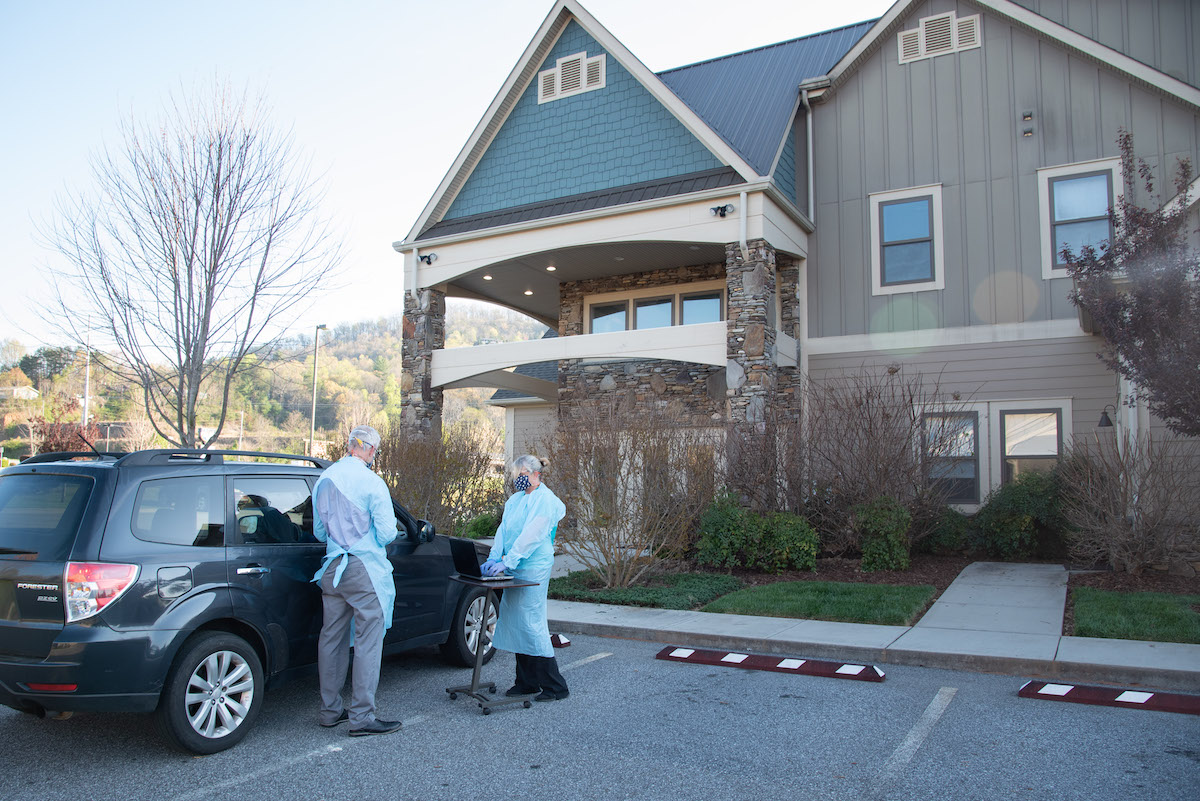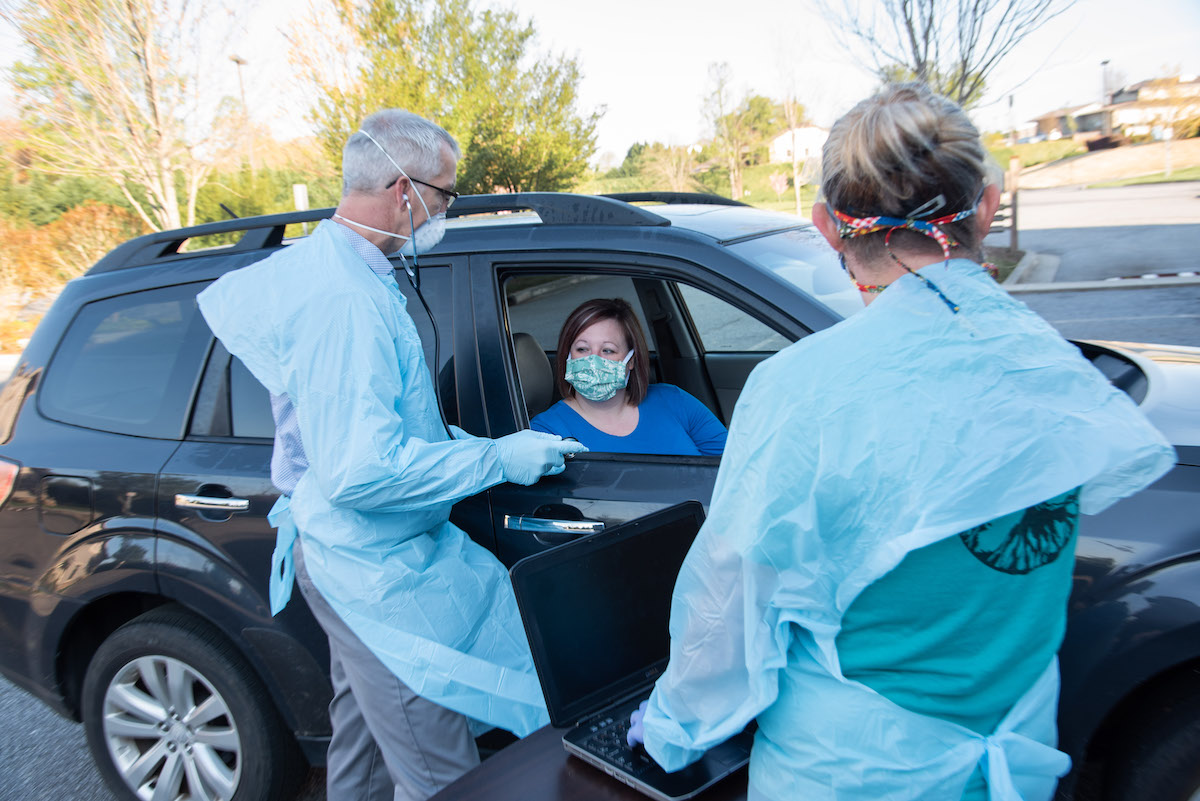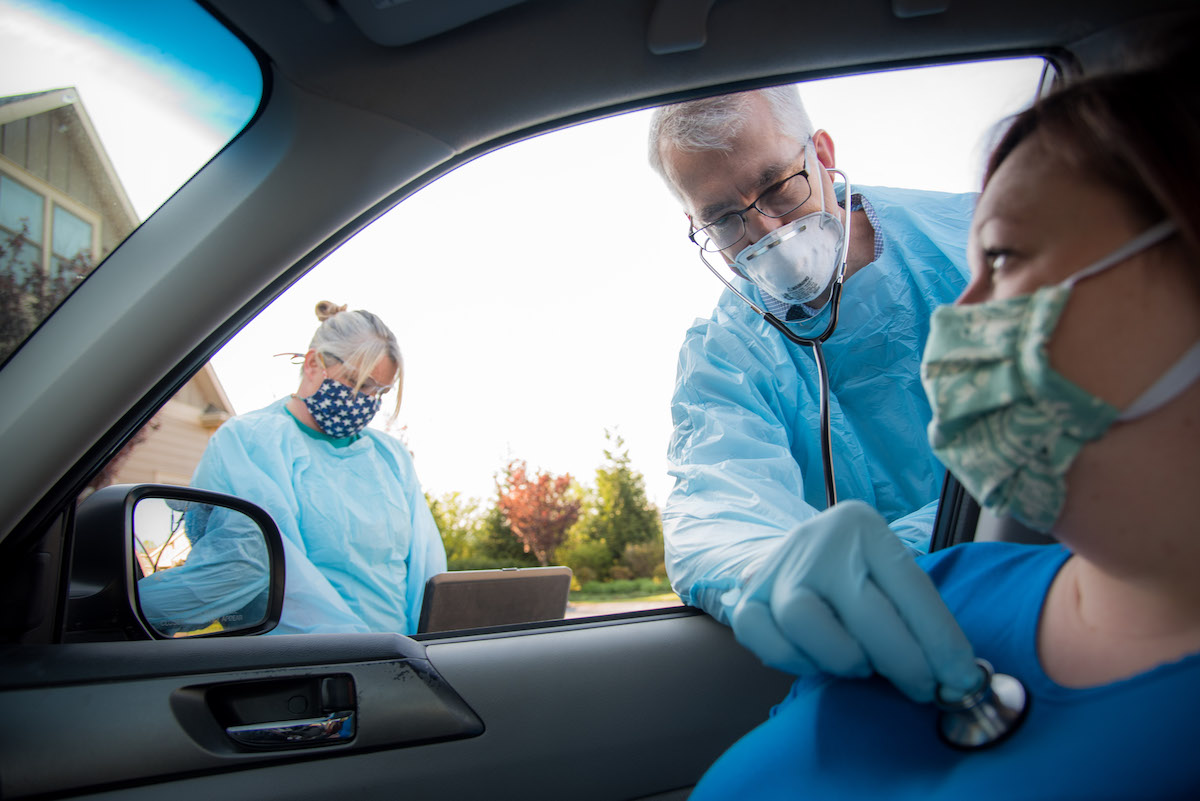


Samuel L. Church, MD, MPH, and Jessica Grooms, CMA, care for a patient in the parking lot of Synergy Health in Hiawassee, Georgia.
![]() Journal Audio: An audio version of this content is available.
Journal Audio: An audio version of this content is available.
In an effort to minimize patient and staff exposure to infectious pathogens (COVID-19, influenza, etc.), many offices are redefining the waiting, triage, and exam rooms. Some clinics are conducting parts or the entirety of the patient encounter in the parking lot — either in a tent or in the patient's car.
These visits begin with a brief patient evaluation by triage staff, including the collection of vitals and even flu and strep swabs. Physicians and qualified health care professionals (QHPs) then complete the visits through decision algorithms and face-to-face encounters in the parking lot or the exam room, depending on the initial evaluation.
While parking lot visits are most commonly used for patients with fever or infectious symptoms as a way of keeping them isolated from healthy patients, even some healthy patients are requesting follow-up visits in the parking lot, hoping to minimize their exposure as part of social distancing efforts. Some patients are even requesting to have their routine lab draws collected in the parking lot. Interesting times indeed.
Certainly the parking lot format can disrupt the patient flow everyone is accustomed to, and there are limitations if patients need certain examinations or procedures, but patients and clinicians seem generally pleased with these encounters in our clinic.
Because there is some inherent loss of privacy with the parking lot visit, staff should take steps to minimize exposure of protected health information (PHI). Creative solutions include schedule spacing, distancing vehicles, and even having the encounter in a drive-through tent.


Payment
These encounters are subject to the same coding and billing requirements as if they were conducted in the exam room. If the patient does not see a physician or QHP, E/M codes are limited to 99211, along with whatever point-of-care testing is conducted.
There may be new expenses related to these visits including tents, personal protective equipment (PPE), and additional staffing. At this point, there is no mechanism to capture these costs, although it is recommended to keep track of them. Keep in mind that some cases may create additional visit complexity or time, which can be captured through E/M visit levels. In addition, there may be opportunities for businesses and individuals to recover some or all disaster/emergency related losses through state and federal programs.
— Samuel L. Church, MD, MPH, CPC, CRC, FAAFP
Northeast Georgia Medical Center Family Medicine Residency, Core Faculty
AAFP Advisor, AMA CPT Editorial Panel
Sign up to receive FPM's free, weekly e-newsletter, "Quick Tips & Insights," featuring practical, peer-reviewed advice for improving practice, enhancing the patient experience, and developing a rewarding career.
Disclaimer: The opinions and views expressed here are those of the authors and do not necessarily represent or reflect the opinions and views of the American Academy of Family Physicians. This blog is not intended to provide medical, financial, or legal advice. All comments are moderated and will be removed if they violate our Terms of Use.